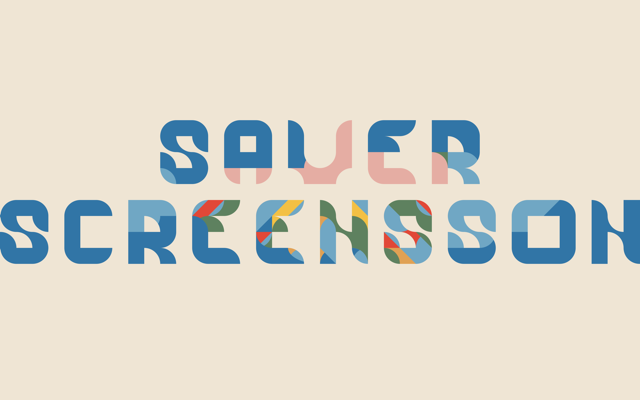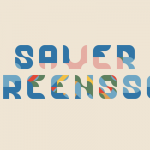by
A History of AI in Nine Parts
From Adbusters #118:

1. Bruno
If you really want to talk about the origins of AI, you need to leave Silicon Valley and fly back in time to the Campo de’ Fiori in Rome on February 17th, 1600. There you’d find a heretical friar being burned at the stake. His name was Giordano Bruno and the list of his crimes was extensive, including a belief that stars were actually distant suns potentially surrounded by their own planets, and that the universe was functionally infinite, with no physical central point.
Given that he also denied the divinity of Christ, the immaculate conception, the existence of the Trinity and transubstantiation, it is somewhat surprising that he chose a career in holy orders, but Bruno was not given to meekly towing the orthodox line in any area of belief. As the flames began licking at the pyre, he persisted in spouting his absurd “scientific” views to the crowd gathered, and so his head was twisted to one side and his tongue nailed to the post to which he had been bound. That would shut him up in the time it took him to cook.
Some 25 years earlier, things had looked rather brighter for Bruno. Attracting attention for his remarkable mental abilities, he was summoned to Pope Pius V to demonstrate his “memory theater.” Using a series of concentric circular disks inscribed with mysterious coded symbols, Bruno claimed to have discovered a system for achieving perfect knowledge, the understanding of all things and thus the route to world peace.
We are born, he explained, with a certain natural memory. We remember people’s names and certain snippets of information, but our human minds are flawed because our bodies are fallen. In order to overcome our failing flesh, in order to lift ourselves up from our fallen state of constant war and violent division, we needed not to rely on divine salvation but on the perfection of our minds.
To do this, he argued, we need help. We need tools to augment our natural memories. We need to develop an “artificial” intelligence.
Denying the virgin birth was one thing, but preaching the attainment of omniscience through occult means? Not even Copernicus had gone that far. They arrested the fucker, and torched him. It doesn’t take long to burn a monk. But the smell? That lingers. It gets into everything.
2. THE MEMEX
If you really want to talk about the origins of AI you also need to get into a mindset that worries about the destruction of the human race. Some 350 years after Bruno, an article appeared in a 1945 edition of Atlantic magazine written by the head of the U.S. Office of Scientific Research and Development and one of the key figures in the Manhattan Project that had scorched Hiroshima and Nagasaki and hastened the end of World War 2. His name was Vannevar Bush and his essay?—?“As We May Think”?—?set out his grave concerns that, unless we profoundly change, our species was going to blow itself to shit.
That we argue, disagree, maim and kill was, Bush believed, down to ignorance. As he looked back on two horrific global wars, he proposed that the way to lasting peace was in the improving of our knowledge and understanding; he then outlined designs for a hypothetical mechanical device to make this happen. For want of a better word he called it a “Memex,” and described how all of a person’s letters, records, information and correspondence could be stored and recalled at great speed.
The Memex would be a sort of circular desk equipped with a specially encoded keyboard, a camera for capturing information and adding them to trails of linked ideas. Sat at their Memex, people would be better informed, more empathetic and far less likely to go to war as they would have “an enlarged, intimate supplement to one’s memory.” He never mentioned Bruno, but the stench of him was all over it.
3. Dealing Lightning With Both Hands
Kicking back on an island in the Pacific ocean, waiting to go home now that the Japanese had been nuked and the war was done, a young conscript called Doug Engelbart was reading Atlantic magazine and wondering what the hell he was going to do with his life when he was done soldiering. An idealist who’d not taken any pleasure from the violence of battle, he read Bush’s article on the Memex and had a Damascene moment. This was what he was going to do. He would return to the US and commit his life to stopping us blowing each other to shit by constructing Bush’s Memex.
On December 9th, 1968, after some twenty years of work, Engelbart felt ready. Now head of the Research Center for Augmenting Human Intellect, he was scheduled to deliver a presentation to the Joint Computer Conference in San Francisco. The blurb he’d written for the conference handbook set out his aims:
This session is entirely devoted to a presentation on a computer-based, interactive, multiconsole display system which is being developed at the Stanford Research Institute under the sponsorship of ARPA, NASA and RADC. The system is being used as an experimental laboratory for investigating principles by which interactive computer aids can augment intellectual capacity.
In the 90 minutes that Engelbart spoke, the audience of around 1000 were absolutely stunned. Now known simply as “The Mother of all Demos,” those who were there have talked of it as a sort of religious experience and describe Engelbart as “dealing lightning with both hands.” That description is quite perfect: him, stood Zeus-like, at his circular console using the first mouse the world had ever seen to move gracefully around a screen while the other hand tapped away on a specially modified keyboard, demonstrating in one single session what we would now recognise as clickable hypertext, cloud storage, Skype video conferencing, logical file structures, collaborative word processing and spreadsheet-style calculations.
All of those inventions, announced in 90 minutes, by one man. All in pursuit of realizing the idea of the Memex. All to augment the human mind, to gift us an artificial intelligence, to lift us away from war and toward omniscience and the knowledge of all things. All to give us each the power to deal lightning, as the ancient gods had done.
4. Il Divino
A century before Bruno was set alight, Michelangelo had been commissioned to paint the ceiling of the Sistine Chapel. So skilled was he that he’d become known as Il Divino?—?the divine one?—?yet his relationship to divinity was one that caused much murmuring in the vaulted corridors of the Vatican.
As he had grown up, Michelangelo had been educated at the Medici’s Humanist Academy and was heavily influenced by thinkers such as Giovanni Pico della Mirandola. Mirandola’s 1486 Oration on the Dignity of Man has been hailed as the “manifesto of the Renaissance,” and is the pretext for his vast 900 Theses, which he considered the sum of all knowledge, the complete works that would need to be arranged in a memory theater and learned off by heart as one began to lift oneself out of the shadows of ignorance and up the chain of being toward immortal Truth.
In other words, the same occult teachings that informed Bruno had also formed the artist Michelangelo. Yet, rather than risk burning, he encoded his beliefs in his paintings. Like his contemporary Leonardo da Vinci, he was a keen anatomist, and research on the shadowy forms painted behind the figure of God in The Creation of Adam reveals that their outlines are perfect representations of the different parts that make up the human brain: the stem, the cerebrum, the pituitary gland and the paths of the optic nerves.
Thus, on the ceiling of the most hallowed hall of the Catholic Church, Michelangelo has left an encrypted heretical message: the locus of divinity is the mind itself. This was the way we would achieve perfection. The bridging of the finger-wide gap between ourselves and omniscience is achieved in the augmentation of the intellect through the occult art of memory.
5. Transcendent Man
Engelbart had not set out simply to build Bush’s Memex. Keeping abreast of all developments in computing, he had realised that the process of augmenting our intellectual capacity could be greatly accelerated if all of these discrete Memex machines could communicate with one another. By building a connected web through which knowledge and understanding could be shared, “artificial” memory could grow exponentially.
As work on this idea of a digital network progressed, Engelbart made sure that he was at the front of the queue to join it. On October 29th, 1969, ARPANET was finally ready to be tested, with Engelbart’s lab in Menlo Park and a machine at UCLA the first two nodes to be connected. At 10:30 pm, Charlie Kline, a computing student at UCLA, began transmission from the department’s Sigma 7 machine, attempting to send the word LOGIN to Engelbart’s SDS 940 computer 300 miles up the coast.
Unfortunately, after just two characters, the system crashed. Thus?—?like the beginning of an angelic pronouncement that something almighty was among us but that we should not be afraid?—?the first utterance over the proto-Internet was LO.
Others quickly built on Engelbart’s work and saw in this vast network of Memex machines the genuine possibility of fulfilling not just Bush’s vision, but Michelangelo’s and Bruno’s: the pinky-small space between humanity and divinity could be bridged … digitally. With the electronic memory theater of a powerful computer we could augment the mind so radically that it could begin to approach omniscience.
Way back in the 11th century, the Saxon theologian Hugh of Saint Victor had written that “the mechanical arts supply all the remedies for our weakness, a result of the Fall, and, like the other branches of knowledge, are ultimately subsumed under the religious task of restoring our true pre-Fall nature.”
AI is hailed as a remedy for our weakness, and the man pursuing this religious task most fervently is Ray Kurzweil. Having invented machines for helping the blind to read and making huge leaps forward in synthesized music, Kurzweil decided that the true goal of his life would be to transition from a carnal existence into embodiment in electronic hardware, thus guaranteeing himself life after death.
The paradox of Kurzweil’s life is that he must keep his body alive until he has invented the technology that will allow him to dispose of it. Taking over 200 pills and supplements a day, he is working tirelessly on the use of the mechanical arts as the final remedy for our weakness, employing digital technology to transform us completely until we can escape the human condition.
“It will be the universe waking up,” he says in a film, describing the self-replicating nano-machines he proposes will help him upload his mind to the web and become virtually omniscient, immortal and omnipresent. “People say ‘does God exist?’ and I say, not yet.”
The title of this documentary? Transcendent Man.
6. Summoning the Demon
This “awakening of the universe,” this creation of a god that does not yet exist is not something that all welcome. Once a machine is created that is more intelligent than us, more connected to more systems than we can ever be, who is to say what it will decide to do? Might we not become mere fuel for its own hungry evolution?
This is not mere techno-panic, the shrill voice of the Luddite. In October 2014, in a question and answer session following an interview at the grandly titled “MIT AeroAstro Centennial Symposium,” SpaceX owner and bleeding edge techno-genius Elon Musk was asked about AI. His carefully considered answer:
“We should be very careful […] With Artificial Intelligence we are summoning the demon. You know all those stories where there’s the guy with the pentagram and the holy water and he’s like yeah, he’s sure he can control the demon … well it didn’t work out.”
Watch the interview: you will see that his manner is not jokey or flippant. Musk speaks slowly, thoughtfully and ends up so deep in reflection on his own answer that he completely misses what the next questioner says, has to apologize and asks her to repeat it.
To those with any background in the arts, any reference to summoning demons inevitably conjures thoughts of the archetypal play with devils, Christopher Marlowe’s The Tragical History of the Life and Death of Doctor Faustus.
Marlowe’s protagonist, Faustus, is a brilliant academic?—?but he is bored. Tired of the everyday, having reached the limits of human knowledge, he longs to push further and is taken by the promise of the occult. Delighted at his ability not only to summon a demon but make him change form, Faustus believes that he has everything under control:
“How pliant is this Mephistopheles, full of obedience and humility. Such is the force of magic and my spells!”
But he is already in deeper than he thinks. He demands that Mephistopheles obey his every command, but the demon refuses, saying, “I am a servant to great Lucifer, and may not follow thee without his leave.”
Faustus still has the chance to pull back, but the temptation of omniscience is too much and he plunges onward?—?not toward greater knowledge, but eternal damnation.
Marlowe’s play was written in 1589 and was heavily influenced by the time he spent with a radical thinker who had come to London in the 1580s. Vehemently condemning the pitiful state of university teaching at Oxford, this firebrand had advocated a new system of higher learning, a mystical method for perfecting human memory and lifting oneself to divine knowledge.
The name of the visiting lecturer who became Marlowe’s Doctor Faustus? Giordano Bruno.
7. The Monster Within
The demon that Faustus summons refuses to serve him because he is already indentured to Lucifer, the one-time angel who was cast from heaven for attempting to usurp the Almighty, for daring to assume equality with the divine.
Turns out that it’s kind of Lucifer’s “thing.” He returns to the theme as he slides up to Eve, walking in the garden with an apple in her hand, tempting her to question what she thought she knew:
“God knows,” he says to her, “that in the day you eat of it your eyes will be opened, and you will be like God.”
The demon that AI summons is still in Lucifer’s service, speaking the same wild promises. One AI evangelist writes that “we will all become angels and for eternity. Cyberspace will feel like Paradise, a space for collective restoration of the habit of perfection.”
The goal is exactly that of the church. Lucifer was cast down and Bruno was burned not because their end was at fault?—?unity with the divine is what everyone from the Pope to the Dalai Lama to Michelangelo to Kurzweil is after?—?but because the means of achieving it was considered sinful. Ascension to heaven is the sole work of Christ; those who try to make their own stairway to heaven should be flamed.
In fact, religion and technology have always fed from the same fuel. Whether holy spirits or evil demons, what lurks within us is a lust to ascend, to know All Things, to escape our human limitations and failing bodies and become Most High. This desire is the monster within, but one great irony is that through AI we really do risk creating a hell into which we will be unable to stop falling.
8. The Question Concerning Technology
I can imagine Giordano Bruno wielding an iPhone, stepping into the future and having little trouble getting to grips with modern life. Martin Heidegger though … I think he’d be cursing in irritation, compound German swearwords piling up as he rose from his desk at his hut in the mountains and took a log splitting axe to the thing.
In 1954, Heidegger published The Question Concerning Technology, a typically tough read written long before any hint of the digital ubiquity we now inhabit, but highly applicable because his arguments are about fundamentals.
In short, all technologies perform a work of revelation. To the man with a hammer, everything looks like a nail, just as to the woman with a skateboard everything looks like a ride. Technologies reveal the world to us in new ways, and part of the promise that they use to attract us is the form of revelation they can bring.
The hammer can make limited promises: it can create fine carpentry or smash your face in, but its reach is physically small. A gun can perform a version of “action at a distance”?—?promising life-changing effects (i.e. life-ending ones) with the slightest squeeze of the hand.
The problem with networked digital technologies is that the promises they make become religious in scale. The ads tell us that we can know anything, at any time, that we can instantly reach an audience of billions with the swipe of a finger, drop down into any street in any city, or spin our globe and land anywhere on it. The promise is divine, and Lucifer is hissing contentedly.
It is this revelatory power that is constantly venerated, constantly spouted by technology companies, but Heidegger is not yet done. As much as technologies reveal, they also work to “enframe” us?—?to prevent us from seeing the world in any other way than the one they offer. Wearing Google Glass reveals whole new layers of information about the world around us, but in this dazzling revelation it also works to conceal other ways of understanding the spaces and people around us.
This is the fundamental mistake of everyone from Bruno to Kurzweil, of those who think that AI will be able to perfect our fallen nature and deliver divine knowledge. We might have vast amounts of data revealed to us in evolving toward digital consciousness, but the smell of coming rain or the squeeze of a hand?—?all of this will become concealed. It is the very same mistake made by those who burned Bruno: their religion was their technology; one that, like others, still claims full revelation but is fundamentally?—?and dangerously?—?myopic.
9. Revolution as Re-Orientation: In Defense of Real Intelligence
What then are we to do? In the face of this great and ancient lust for the Eden of perfect knowledge, how are we meant to resist?
First, we must reject the rejection of technology. We could smash our tablet computers, but we’d still be using toothbrushes. Heidegger is right: “we remain unfree and chained to technology, whether we passionately affirm or deny it.”
Yet, second, that does not mean we are impotent. Far from it. What matters most is our orientation to the tools that we use. To what ends are we putting them? Are we projecting onto them a hope of perfect revelation?
Part of our manifesto needs to be the constant exposure of the bullshit promises that technology ads make, to help people see the ways in which their devices are concealing whole layers of the world from them.
Most important, though, our task as we face the future is to deal with this religious drive within us, this desire to lift away from our bodies and become divine. This is the demon that sustains the worse excesses of both the technology of religion and the religion of technology.
We need instead to come to terms with our finitude and embrace our existential imperfection. Our striving for the impossible risks destroying the good life that is possible. Just like the gleaming new phone in that commercial, you are one day going to die, to slow down, shut down and be lowered into the earth. The intelligence that promises otherwise is artificial. Real wisdom lies in the embrace of the short time we have together, and the calm rejection of desperate ways to extend it.
—?From Kester Brewin’s upcoming book Getting High — LSD, the 60s and the Human Quest for Altitude. A schoolteacher and activist, his previous counterculture work includes Mutiny! Why We Love Pirates, and How They Can Save Us. He recently gave a UK TED Talk about pirates as fierce defenders of the commons.
Source












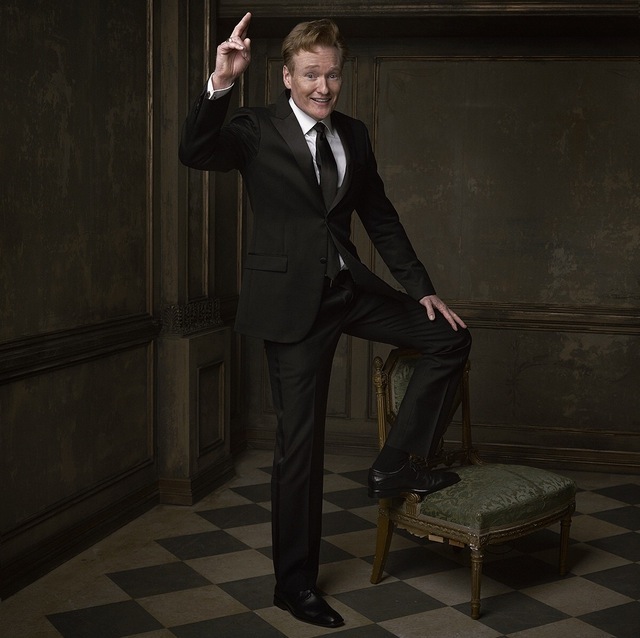




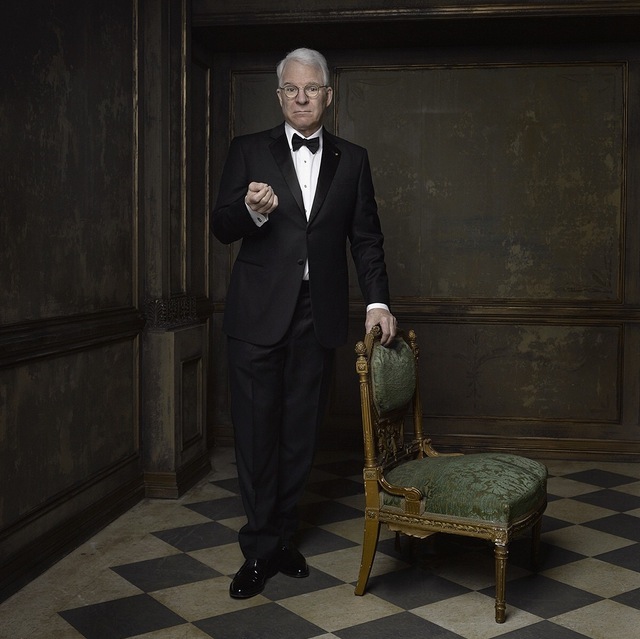
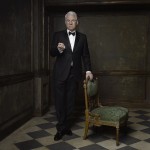





































 This afternoon we can confirm that Brent Vartan, New York-based partner and chief strategy officer for Deutsch New York, will soon be leaving the agency.
This afternoon we can confirm that Brent Vartan, New York-based partner and chief strategy officer for Deutsch New York, will soon be leaving the agency.



















